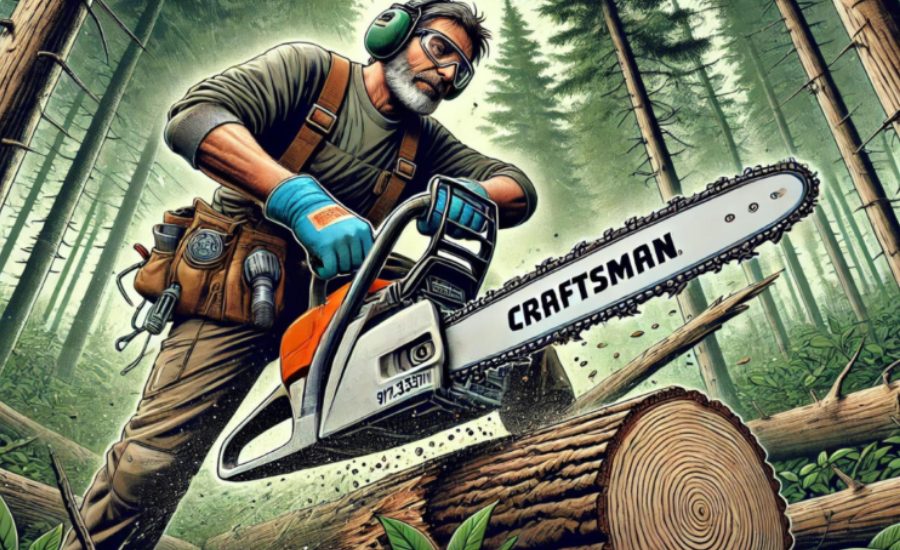Craftsman Chainsaw 917.353710, Sprockets and Chains & More
Introduction to Craftsman Chainsaw 917.353710, Sprockets and Chains & More
With regards to keeping up with your trimming tool, approaching the right parts and outlines is vital. Whether you’re an expert trimming tool administrator or a Do-It-Yourself devotee, keeping your trimming tool all ready can guarantee protected and proficient cutting execution. The Expert Model #917353710 trimming tool is a famous model known for its dependability, yet like any instrument, it requires intermittent fixes and substitutions.
This article gives an exhaustive manual for the top parts for the Specialist Model #917353710 trimming tool, offers a breakdown of significant graphs and schematics, and gives tips on keeping up with and investigating your trimming tool to keep it moving along as expected.
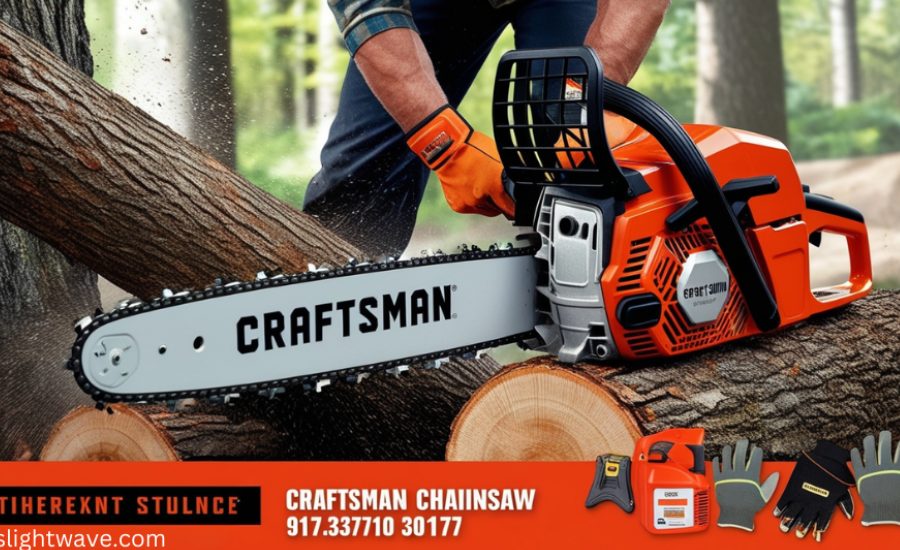
The Specialist trimming tool, model #917353710, is intended for uncompromising cutting errands, making it a confided in device among property holders and experts the same. Whether you’re cutting kindling, managing trees, or clearing land, this trimming tool can deal with various eliminating positions. Be that as it may, after some time, mileage can make specific parts come up short or require support. To keep your trimming tool working effectively, it’s vital to dive more deeply into its critical parts and know where to find the right new parts.
This guide will walk you through the absolute most significant pieces of the Expert 917353710 trimming tool and how to find the right new parts when required.
Understanding Chainsaw Sprockets and Chains
Two of the most essential parts of any trimming tool are the sprocket and the chain. The sprocket drives the chain around the trimming tool bar, considering the cutting activity. Over the long haul, the sprocket can wear out, prompting decreased execution and expanded wear on the actual chain.
Additionally, the chain is the part that straightforwardly slices through the wood, and it should be sharp and very much kept up with to appropriately work. A dull or harmed chain can build the burden on the motor and diminish cutting proficiency. Consistently assessing and supplanting the sprocket and chain when fundamental will guarantee that your trimming tool keeps on performing at its ideal.
Parts and Diagrams for the Craftsman Model #917353710
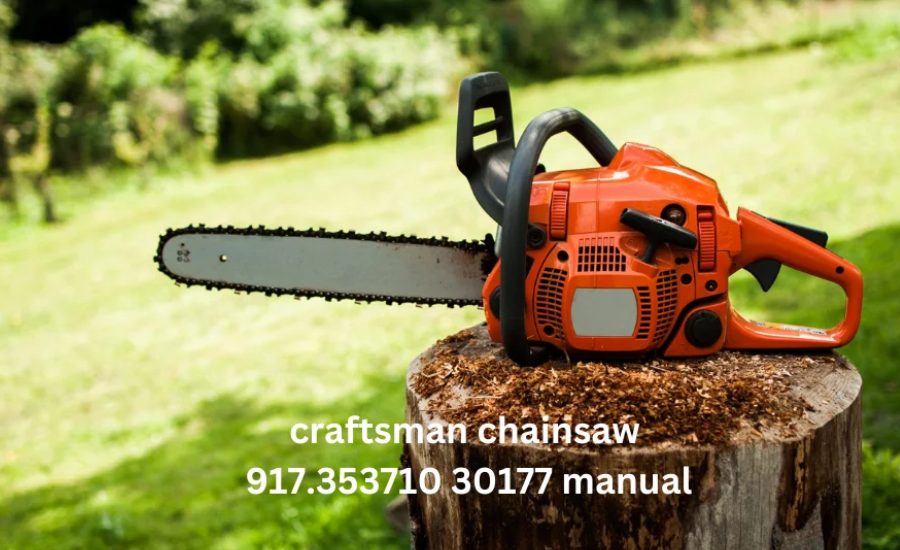
One of the best ways of keeping up with and fix your Specialist trimming tool is by alluding to itemized charts and schematics. These charts assist with distinguishing the area and number of individual parts, making it simpler to arrange the right substitutions. The following are a portion of the fundamental parts classifications and outlines you ought to get comfortable with while chipping away at the Skilled worker Model #917353710 trimming tool.
Sprocket and Fuel Tank, Clutch & Cutting System
The sprocket (#9137H), gas tank, and cutting framework outline subtleties the inside parts that control the trimming tool’s ability to cut. It incorporates key parts like the grasp, chain, and sprocket that cooperate to guarantee smooth cutting tasks.
Engine Components
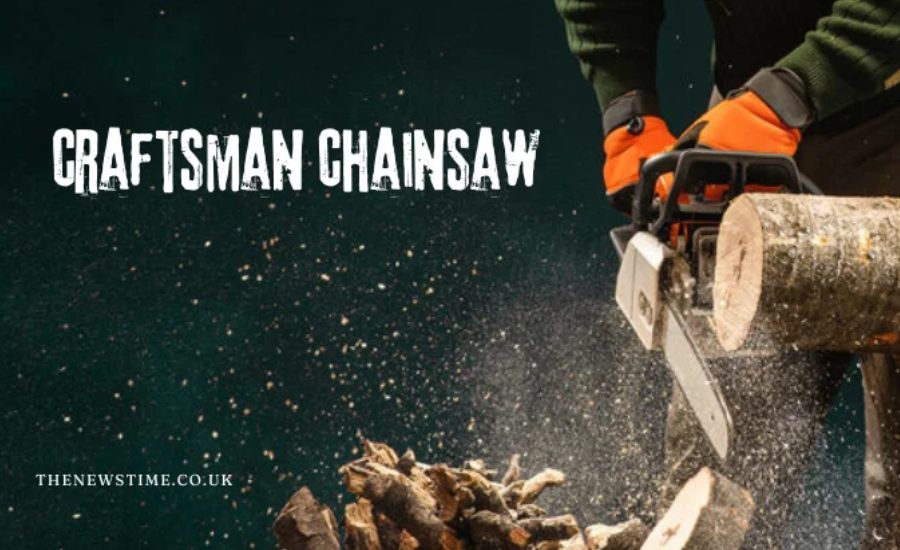
The motor chart frames the different parts of the trimming tool motor. This incorporates parts like the screw (#STD511005), which might require fixing or substitution to keep the motor running appropriately. Keeping the motor all around kept up with is fundamental for long haul execution.
Carburetor Chamber and Oiling System
The carburetor chamber and oiling framework control fuel and oil stream to the motor, guaranteeing smooth activity. Key parts incorporate the cap o-ring (#7713H) and the unclogger (#9079H). Keeping up with these parts is essential for forestalling releases and guaranteeing legitimate grease.
Ignition System
The start chart centers around the parts liable for beginning the trimming tool. This incorporates parts like the washer (#STD551008), which assumes a significant part in the start cycle.
Recoil Starter and Maintenance Kit
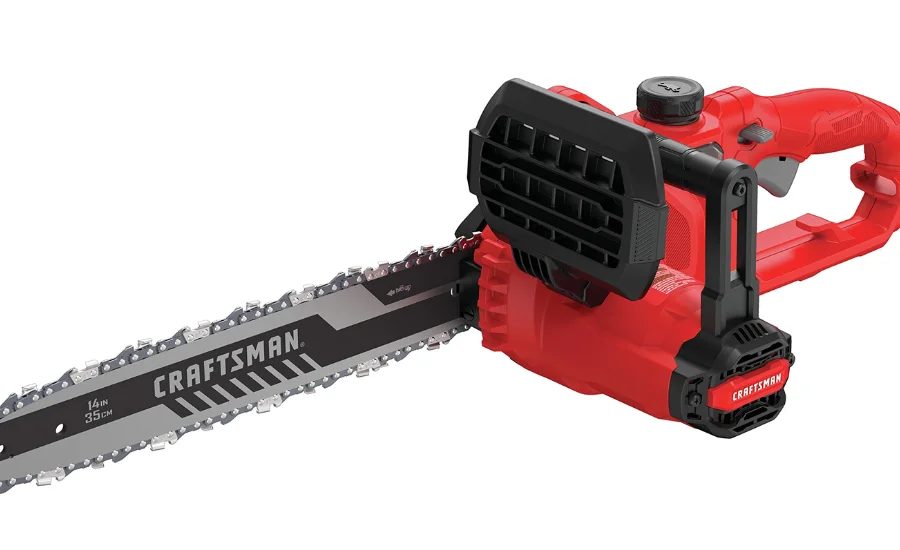
The force starter permits you to begin the trimming tool. At the point when the force line or backlash system comes up short, you might have to supplant parts like the beginning pulley (#9171H). The support unit chart incorporates things for standard upkeep, like the 3/16 in. document (#36548).
4. How to Search for Craftsman Chainsaw Parts
Expert trimming tool parts can be situated through a few strategies. The most productive way is by utilizing a model-explicit hunt device on sites like Singes PartsDirect. This is the way to look for the right part:
- Utilize the model number (for this situation, #917353710) to limit the outcomes.
- Input the part number (whenever known) into the pursuit bar to track down accessibility.
- Assuming that you are uncertain of the part number, you can utilize the charts to outwardly find the right part.
Continuously try to twofold check the part numbers prior to buying, as certain parts might be stopped or supplanted by fresher forms.
5. Top Parts for the Craftsman Model #917353710 Chainsaw
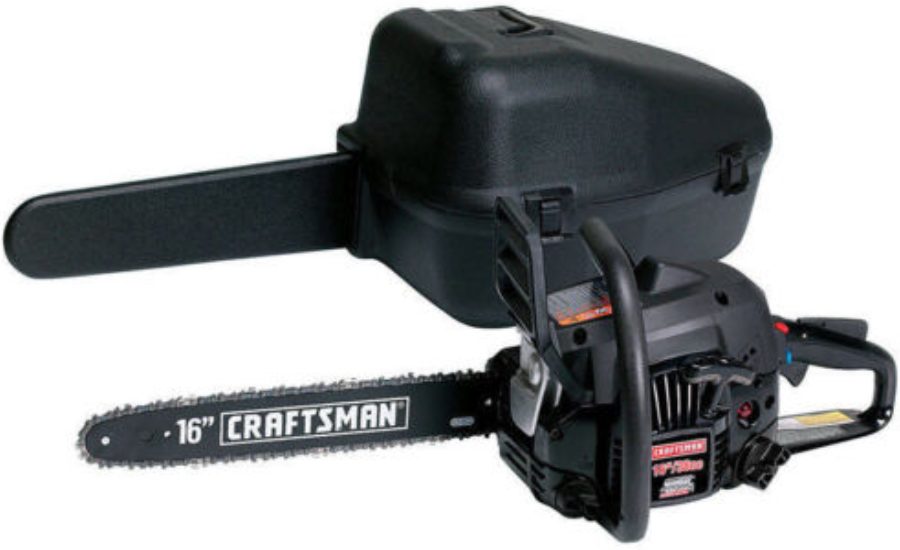
Here are a portion of the top new parts for the Expert Model #917353710 trimming tool, alongside evaluating data:
Sprocket (#9137H)
- Cost: $13.80
- Portrayal: The sprocket is fundamental for moving power from the motor to the chain. Whenever worn, it can diminish cutting proficiency.
Chain (#642A43)
- Cost: $29.53
- Portrayal: The chain is the cutting part of the trimming tool. This specific part has been supplanted by #33SL071G. Routinely supplanting the chain guarantees sharp, exact cutting.
Huglock Nut (#9070H)
- Accessibility: Ceased
- Portrayal: This nut is a critical part in getting different pieces of the trimming tool. Albeit presently not underway, it means quite a bit to check for viable substitutions.
Flash Fitting (#9409H)
- Accessibility: Ceased
- Portrayal: A working flash fitting is fundamental for beginning the trimming tool. Assuming your trimming tool is experiencing difficulty beginning, it could be an ideal opportunity to supplant this part.
6. DIY Troubleshooting and Repair Tips
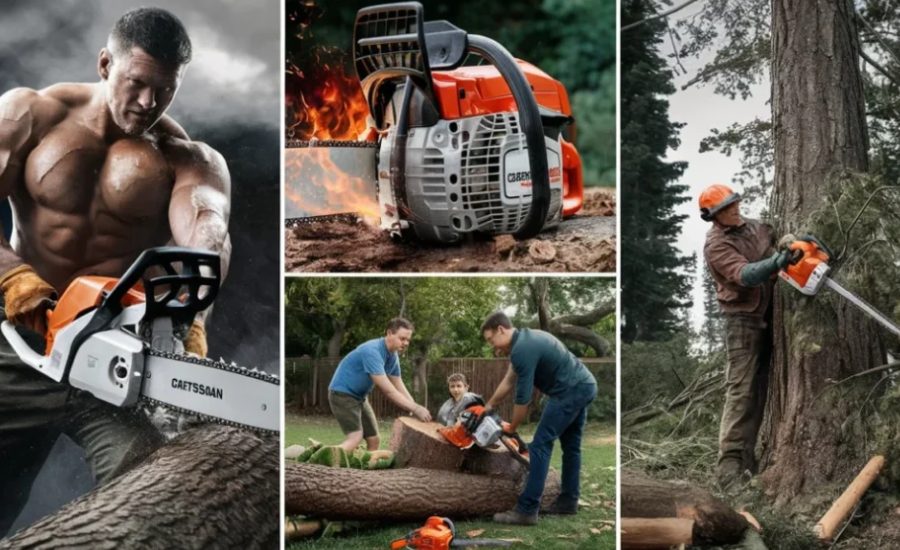
Here are a few normal issues with trimming tools and ways to investigate:
- Trimming tool won’t begin: Check the flash attachment and fuel levels. A filthy air channel can likewise keep the trimming tool from beginning.
- Chain won’t move: This could show an exhausted sprocket or grip. Assess the chain for pressure and sharpness.
- Trimming tool spills oil: The oiling framework might have a harmed o-ring or a stopped up channel. Supplant the o-ring and clean the oil channel consistently.
7. Where to Find Replacement Parts and Manuals
To find official parts for the Skilled worker Model #917353710 trimming tool, visit approved retailers like Singes PartsDirect. Here, you can get to manuals, mistake code tables, and charts for simpler part distinguishing proof. Make certain to save your model number and allude back to it while requesting parts to stay away from botches.
Moreover, for Do-It-Yourself lovers, sites like RepairClinic.com offer video instructional exercises and guides for fixing different trimming tool parts.
Maintaining and Replacing Parts for Vintage Craftsman Chainsaws: A Detailed Guide
One of a kind instruments hold a unique spot for some fans and experts the same. Whether it’s the sturdiness of the materials or the nostalgic worth they convey, keeping an old piece of hardware like a 1977 Specialist trimming tool functional can remunerate. Notwithstanding, swapping parts for such classic models, particularly the sprocket, presents a test for some proprietors. This article plunges profound into the points of interest of keeping a Specialist Model 917.353710, zeroing in on the hardships of finding new parts, the job of current producers, and pragmatic answers for proprietors of one of a kind trimming tools.
Troubleshooting Replacement Parts
Quite possibly the earliest move toward keeping up with or fixing an old trimming tool is obtaining new parts, like the bar, chain, and sprocket. In any case, because of the uniqueness of some rare models, present day producers probably won’t offer promptly accessible substitutions.
A client asked whether anybody makes a swap sprocket for their 1977 Skilled worker model 917.353710 trimming tool. Tragically, it is a test, as cutting edge sprockets may not fit the remarkable plan of the first Expert model. The underlying issue emerges from the obsolete determinations and plan components that are not generally utilized in the present trimming tools.
The Role of Oregon Bar and Chain in Vintage Chainsaw Maintenance
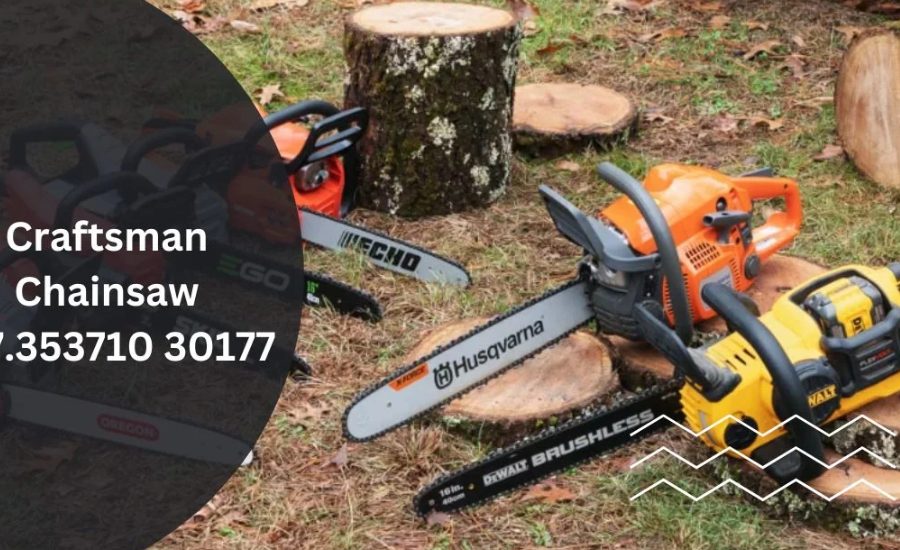
The client referenced reaching Oregon, a notable producer of bar and chain swaps for different trimming tools, including Specialist models. Sadly, the organization no longer offers a bar and chain that would fit the old model. Present day makers, like Oregon, have moved to more current sprocket plans that are contradictory with the more seasoned Expert devices. This leaves proprietors of more established trimming tools stuck, frequently turning to looking for elective arrangements or recycled parts.
Exploring the Modern Rim Sprocket Design
The present trimming tools commonly utilize an edge sprocket plan, where the chain runs over the sprocket in a smooth movement. This varies from the more established one-piece plans found in one of a kind machines. In the conversation, it was proposed that the client could as of now have the cutting edge sprocket configuration, however after additional examination, obviously the 1977 Expert trimming tool had the more established sprocket plan. This convolutes tracking down a reasonable substitution.
Current edge sprockets are intended for effectiveness and strength, permitting trimming tools to deal with bigger chains and bars. For proprietors of more seasoned trimming tools, this progress to a cutting edge sprocket framework can be an answer, yet provided that the bearing and shaft sizes match. For this situation, in any case, the Specialist Model 917.353710 highlights a sprocket that is one of a kind to the machine, and no promptly accessible present day parts fit the details.
Increasing Bar Size: A Potential Solution
An elective arrangement introduced during the discussion was expanding the bar size from 17 crawls to 18 or even 20 inches. This can be a powerful workaround, as the machine ought to have the option to deal with a bigger bar. Trimming tool bars, commonly estimated in inches, decide the length of the cut and the size of the chain required. By moving to a bigger bar, the client could track down additional promptly accessible chains and sprockets that match the new arrangement.
Nonetheless, even with the bar size increment, the client actually needs to guarantee the chain is the right kind. Expert trimming tools from 1977 frequently utilized .375-inch chains, a typical norm for classic saws, yet current reciprocals might contrast somewhat in their estimations. The client’s machine requires a .375 chain, and this determination would in any case have to match the picked bar.
Custom Chains for Vintage Chainsaws
In the event that a chain matching the bar and sprocket can’t be found, custom chains might be the best arrangement. Trimming tool experts, who hone and fix chains, can alter existing chains by eliminating or adding joins. This permits the proprietor to tailor the chain explicitly for their machine.
For instance, in view of the bar number given by the client (180SKDB082), the professional reasoned that this was a 18-inch bar with 82 connections. Nonetheless, in the wake of checking Oregon’s records, it became obvious that a slight change may be expected to fit the particular Specialist model. Changing the connection rely on a chain should be possible by an accomplished trimming tool specialist, making it an open answer for some one of a kind trimming tool proprietors.
Finding Sprocket Replacements for the Craftsman Model 917.353710
The focal test with the Skilled worker Model 917.353710 remaining parts the sprocket. While expanding the bar size and supplanting the chain can give a brief fix, the one of a kind sprocket configuration stays a restricting component.
In circumstances like this, the most ideal choice might be to look for utilized or restored parts. Sites like eBay and particular trimming tool gatherings frequently have uncommon parts for classic apparatuses that are at this point not underway. On the other hand, visiting a nearby shop that spends significant time in old trimming tools could yield improved results. Frequently, experienced trimming tool mechanics have a profound comprehension of classic models and can either source or manufacture a custom sprocket.
Exploring Alternative Products and Brands
As well as looking for unique parts, worth investigating comparative items or brands might offer viable parts. During the conversation, the professional referenced Roper by Specialist as an expected other option. Other classic brands, as Poulan Genius, could likewise offer parts that match or intently look like the determinations of the old Expert saw.
It is generally useful to talk with a trimming tool expert who knows about more established models. Many parts from various makers might be tradable with slight changes, so it merits investigating different choices.
Facts:
- Model Overview: The Craftsman Model #917353710 chainsaw is known for its robust performance, suited for various cutting tasks.
- Key Components: Important parts include the sprocket (#9137H), chain (#642A43), clutch, fuel tank, carburetor chamber, and ignition system.
- Parts and Pricing:
- Sprocket (#9137H): $13.80
- Chain (#642A43): $29.53 (replaced by #33SL071G)
- Huglock Nut (#9070H): Discontinued
- Spark Plug (#9409H): Discontinued
- Replacement Tips: For finding parts, use the model number (#917353710) and part numbers on parts websites like Sears PartsDirect. Verify part compatibility to avoid mistakes.
- Troubleshooting: Common issues include difficulty starting (check spark plug and fuel levels), chain movement problems (examine sprocket and clutch), and oil leaks (inspect o-rings and filters).
Summary:
The Craftsman Chainsaw Model #917353710 is a reliable tool for heavy-duty cutting tasks. To ensure its continued efficiency and safety, regular maintenance and timely replacement of parts are crucial. This article provides a comprehensive guide to the key components, diagrams, and repair tips for the Craftsman Model #917353710 chainsaw. Key areas of focus include understanding the sprocket and chain, essential parts and diagrams, and methods for finding replacement parts. Additionally, it explores troubleshooting tips and alternative solutions for maintaining and repairing vintage models.
FAQs:
Q: How do I find replacement parts for the Craftsman Model #917353710 chainsaw?
A: Use the model number (#917353710) on parts websites such as Sears PartsDirect. Input part numbers or use diagrams to locate the correct parts. Verify part numbers and check for discontinued items.
Q: What are the key parts of the Craftsman Model #917353710 chainsaw?
A: Important parts include the sprocket, chain, clutch, fuel tank, carburetor chamber, ignition system, and recoil starter. Each plays a critical role in the chainsaw’s operation.
Q: How often should I replace the chainsaw chain and sprocket?
A: Regularly inspect the chain and sprocket for wear and tear. Replace the chain if it becomes dull or damaged, and replace the sprocket if it shows signs of wear. This helps maintain efficient cutting performance.
Q: Can I use modern parts for a vintage Craftsman chainsaw?
A: Modern parts may not always fit vintage models due to design changes. For older models like the 1977 Craftsman #917353710, you might need to seek out used parts or custom solutions. Contact specialized chainsaw repair shops or look on platforms like eBay.
Q: What should I do if I can’t find specific parts for my chainsaw?
A: Consider alternative solutions such as increasing the bar size or custom chains. Check with chainsaw specialists or vintage equipment shops for used or custom parts. Investigate comparable brands for possible compatible parts.
Q: How do I troubleshoot common chainsaw issues?
A: For starting issues, check the spark plug and fuel levels. If the chain doesn’t move, inspect the sprocket and clutch. For oil leaks, check the o-rings and oil channels. Regular maintenance and timely repairs are key.
For more Gadget visit trendaddictor.com

